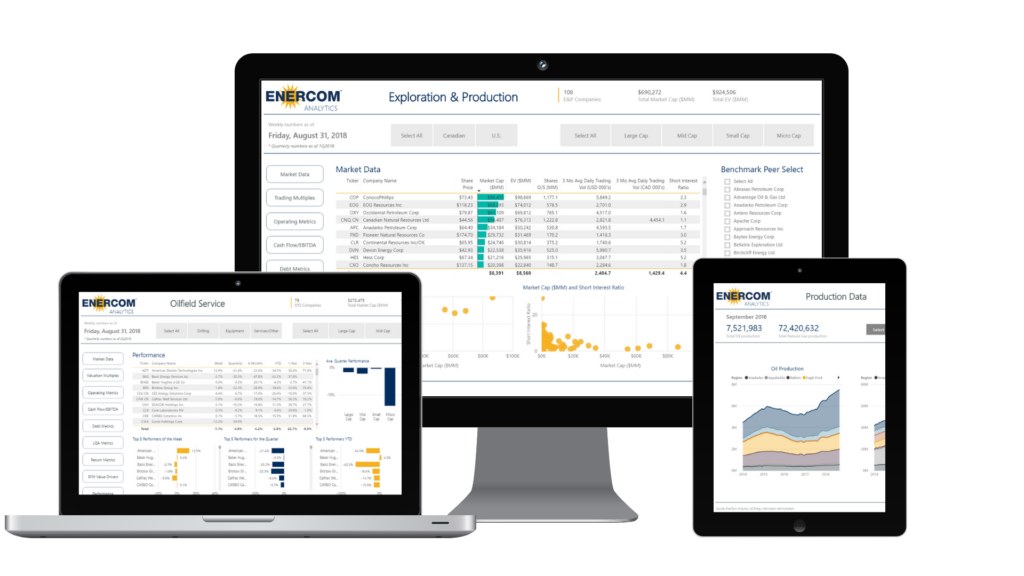Global exploration and production spending is poised to reach $723 billion in 2014, according to a 2014 Global E&P Spending Report by Barclays on December 9, 2013. The record will mark the first time spending has eclipsed the $700 billion mark, and represents an increase of 6.1% in regards to 2013’s total of $682 billion. Barclays estimates the United States alone will experience growth of 7% as the world moves away from infrastructure projects and focuses more on the completion side. The North American budget is also predicted to rise 8.5% in the upcoming year after growth of just 2% in 2013 and 4% in 2012. The increase in commodity prices has now made the resources more economical to recover. The 2013 spending plans are based on oil prices of $98 Brent and $89 WTI and U.S. natural gas prices of $3.66. At today’s close of business, those particular commodities were priced at the near-month at $109.65, $98.52 and $4.25, respectively.
Barclays expects E&P spending to increase through 2017, when it anticipates global spending to near $1 trillion. Offshore development will be the main beneficiary of the rise.
Interestingly, the increased spending is a result of national oil companies rather than supermajors in the U.S. PetroChina is expected to lead all companies in 2014 spending. Growth in Latin America (13%) and Russia (11%) are pegged as the second and third greatest increases in 2014 expenditures by region, respectively. The growing need for natural gas, particularly in Asia, is a major point for increased E&P from companies in the area. Asia is already the largest importer of natural gas, and the Energy Information Association expects China’s demand to be double of the United States by 2040.
Permian Basin is the U.S. Driver
North American companies are waning from international investment and focusing more on homegrown projects. The country’s natural gas boom has established itself as a two commodity market. Chevron (ticker: CVX) and Conoco Phillips (ticker: COP) in particular are expected to increase U.S. spending by 8.5%. Development in the Permian Basin is a focal point of 2014 expenditures. Devon Energy (ticker: DVN) and Concho Resources (ticker: CXO) have each allotted 2014 Permian spending to grow by more than 30%. Attention to the Permian can be credited to the market’s preference for oil-based assets. Horizontal drilling has become the preferred method in the play and the unconventional opportunities provide further reason for investment. Net additions for horizontal rigs are predicted to rise by 50 to 70, an increase of 35%.
Other large companies like Noble Energy (ticker: NBL) are increasing spending by 41%, and Continental Resources (ticker: CLR) is raising spending 13.9% to meet a company goal of increasing its Bakken net well count by 22%. The Gulf of Mexico is shifting towards a production phase, as 18 floating rigs are expected to be delivered through Q1’15. A total of 60 rigs are expected be in the region by that time, up from the current count of 40.
International Spending Fueled by National Oil Companies
The Middle East remains the world’s pace setter by region and is expected to increase 2014 spending by 14%. Iran’s looming return to the market has not affected Saudi Arabia. Saudi Aramco is contributing an extra 20% to 2014 development, and Kuwait anticipates matching its neighbor’s output. Strife in countries like Syria and Iraq have hampered some operations but the production of other oil giants will offset any decreases, especially since Saudi Arabia has reiterated its goal to boost exports.
In Latin America, Pemex is expected to ramp up spending through unconventional projects. The continent has undergone considerable transition throughout 2013. Petrobras (ticker: PBR) has invested heavily in developing its offshore assets in the Libra Basin through production sharing contracts. Pemex, meanwhile, is close to opening its doors for foreign investment. The state-owned company has held a monopoly on its industry since it was nationalized in 1938. Venezuela is a big contributor to the gains, as state-owned PDVSA will direct 50% more capital to its 2014 development program.
Russia’s spending is poised to increase for the fifth straight year. Its 11% jump in 2014 spending will be propelled by Rosneft, whose expenditures are anticipated to increase by 26%. Gazprom, however, is actually expecting a significant decline in expenditures for the year. Excluding Gazprom, Russia’s expected cost increase would be 18%. The investment is expected to rise in the near term. More than 90 wells have been identified in the offshore Arctic and current backlog is expected to last until 2020. Russia, the world’s second-largest producer of natural gas, will continue to exploit the assets and deliver to energy-starved Asian markets.
Canada snapped its two-year decline by posting a gain of 3% for 2014. Spending from international investors and North American supermajors contributes to the increase, despite smaller-budget companies dropping costs by 8%. Canada’s future appears to be promising, as several LNG export projects are slated to begin as early as 2017. Nine proposed facilities are expected to double LNG output by as early as 2H’14. The long-disputed Keystone Pipeline would rearrange the landscape, but its uncertainty makes it a non-factor in any future reports or projections.
[sam_ad id=”32″ codes=”true”]
Important disclosures: The information provided herein is believed to be reliable; however, EnerCom, Inc. makes no representation or warranty as to its completeness or accuracy. EnerCom’s conclusions are based upon information gathered from sources deemed to be reliable. This note is not intended as an offer or solicitation for the purchase or sale of any security or financial instrument of any company mentioned in this note. This note was prepared for general circulation and does not provide investment recommendations specific to individual investors. All readers of the note must make their own investment decisions based upon their specific investment objectives and financial situation utilizing their own financial advisors as they deem necessary. Investors should consider a company’s entire financial and operational structure in making any investment decisions. Past performance of any company discussed in this note should not be taken as an indication or guarantee of future results. EnerCom is a multi-disciplined management consulting services firm that regularly intends to seek business, or currently may be undertaking business, with companies covered on Oil & Gas 360®, and thereby seeks to receive compensation from these companies for its services. In addition, EnerCom, or its principals or employees, may have an economic interest in any of these companies. As a result, readers of EnerCom’s Oil & Gas 360® should be aware that the firm may have a conflict of interest that could affect the objectivity of this note. The company or companies covered in this note did not review the note prior to publication. EnerCom, or its principals or employees, may have an economic interest in any of the companies covered in this report or on Oil & Gas 360®. As a result, readers of EnerCom’s reports or Oil & Gas 360® should be aware that the firm may have a conflict of interest that could affect the objectivity of this report.






